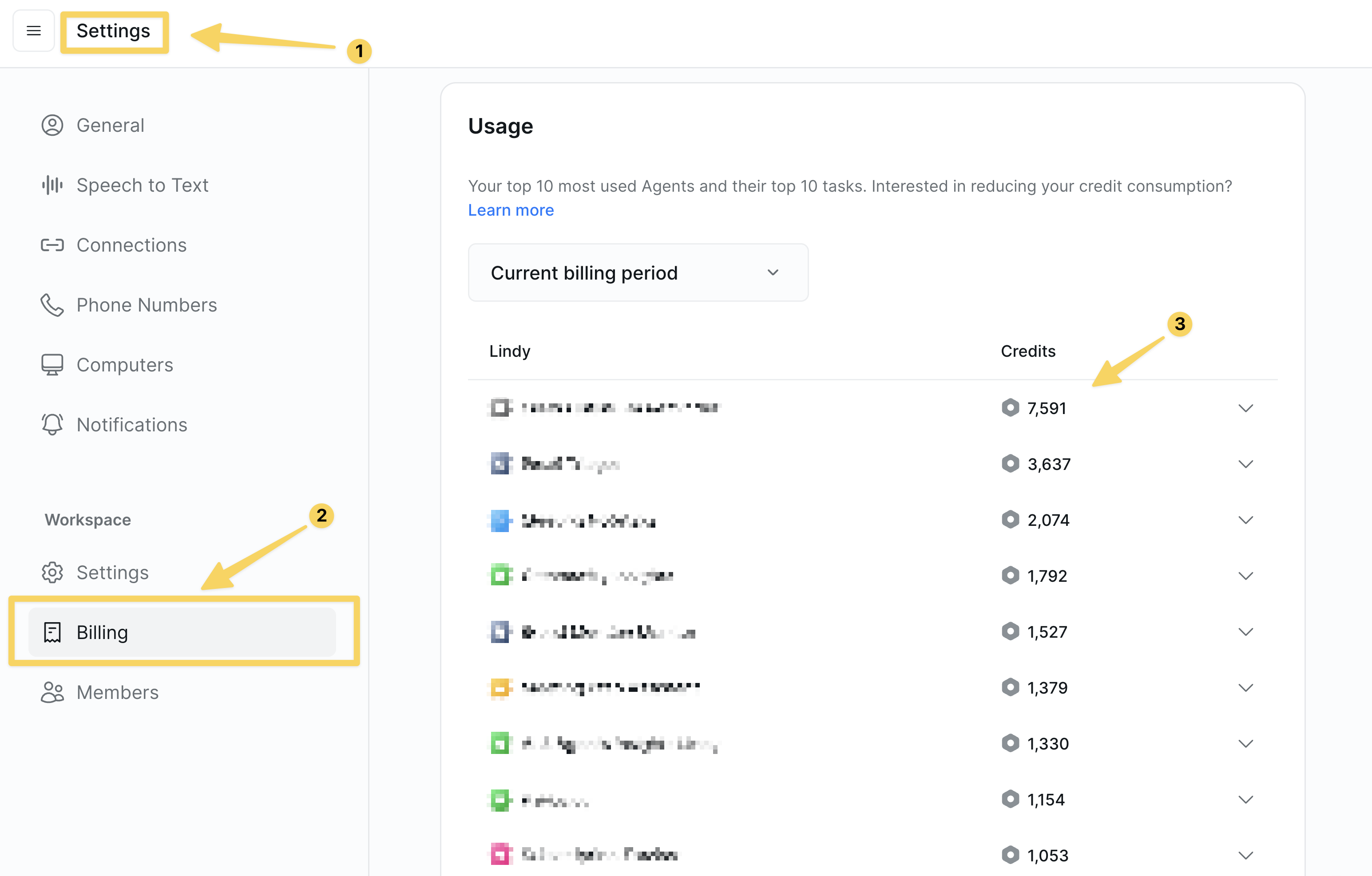Overview
Credits are the currency at the core of Lindy’s billing system. Understanding how they work helps you optimize costs and plan your automation workflows. Perfect for:- Cost planning — understand what drives credit consumption in your workflows
- Usage monitoring — track credit spending across tasks and models
- Optimization — reduce costs while maintaining automation effectiveness
1-3 credits on small models and 10 credits on Large models, with costs varying based on AI model choice, task complexity, and actions used.
Basic models often work well for simple tasks. Start with more powerful models to get workflows right, then downgrade while monitoring results to find the optimal balance.
What are Credits?
Credits determine the cost of each task based on the AI model you use, task complexity, and actions included in your workflow. Every task is at minimum 1 credit. Tasks that include premium actions or LLM calls will consume more credits. Credit costs scale with:- Model intelligence — more advanced models use more credits
- Task complexity — processing hundreds of spreadsheet rows vs. updating one row
- Premium actions — specialized integrations and features
- AI agent duration — agents run until completion, using more credits for longer tasks
What is a Task?
A task is everything your agent does after being triggered by an event or user message. Tasks begin when a workflow is initiated and include all subsequent steps — conditions, actions, AI agent steps, and messages.Monitoring Your Credits
Track credit usage through Lindy’s task view and sidebar gauge:Task View
- Click your Lindy in the sidebar and select “Tasks”
- Access a task from the task list
- Hover over each step to see credits used for that specific step
Total Usage
- Bottom left gauge shows billing credit consumption for current cycle
- Hover for details to see when credit balance resets for next billing cycle

Credits do not roll over between billing cycles. When you run out of credits, your agents pause operations and new tasks are put on hold.
Best Practices
Optimize Credit Usage
Optimize Credit Usage
- Filter High-Volume Triggers - Only allow actions on relevant events with specific filters (e.g., limit email triggers to specific domains)
- Use Cheaper Models - Basic models work well for simple tasks; evaluate if you need advanced capabilities
- Test and Monitor - Start with powerful models, then gradually downgrade while monitoring results
Monitor and Plan
Monitor and Plan
- Check the task view regularly to understand credit consumption patterns
- Use the sidebar gauge to track monthly usage
- Set up workflows gradually to understand their credit impact
- Review premium action usage to identify optimization opportunities
Model Selection Strategy
Model Selection Strategy
- Start with mid-tier models for development and testing
- Use advanced models only when you need their specific capabilities
- Consider task complexity when choosing models
- Monitor results when downgrading to ensure quality maintains